9.04.2023
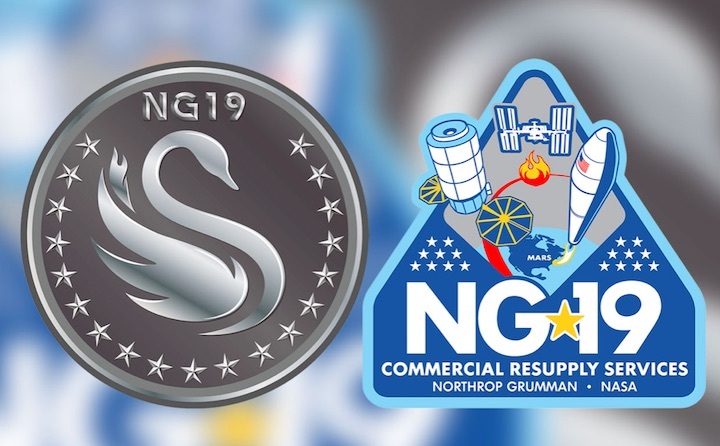
Northrop Grumman names cargo craft for fallen Columbia astronaut
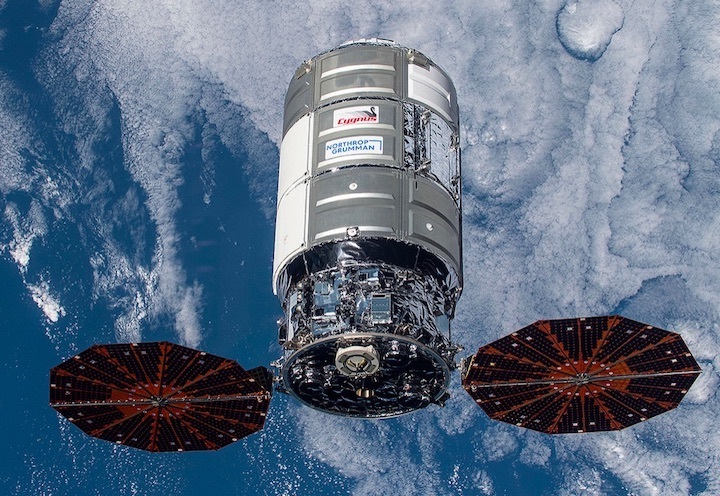
A NASA astronaut whose first spaceflight was the ill-fated final mission of the space shuttle Columbia is being remembered with the naming a space station-bound cargo spacecraft.
Northrop Grumman on Thursday (April 6) announced that its NG-19 Cygnus resupply vehicle will honor the late Laurel Clark, "a woman whose career took her under the sea and to the stars."
"I am honored to announce that our 19th mission will be named for Dr. Laurel Clark, a NASA astronaut, medical doctor, US Navy Captain, space shuttle mission specialist and my former classmate in NASA astronaut group 16, affectionately nicknamed 'The Sardines,'" Dani Tani, who today serves as Northrop Grumman's director of business development, said in a video statement released by the company. "This year, we mark 20 years since the space shuttle Columbia tragedy when Laurel and six other crew members lost their lives."
"We are honored to name this Cygnus the 'S.S. Laurel Clark' in celebration of her enduring legacy," he said.
Prior to becoming a NASA astronaut in 1996, Clark received a bachelor's degree in zoology and a medical degree from the University of Wisconsin in 1979 and 1987, respectively. While in medical school, she completed active duty training with the diving medicine department at the U.S. Navy Experimental Diving Unit and completed her postgraduate medical education in pediatrics at the National Naval Medical Center in 1988.
During her military career, Clark worked as a radiation health officer, undersea medical officer, naval submarine medical officer, diving medical officer and naval flight surgeon.
As a member of the STS-107 crew, Clark joined her fellow six astronauts aboard Columbia in working 12 hours a day in alternating shifts to successfully conduct 80 science experiments. Clark's bioscience experiments included gardening in space. She enjoyed taking photos of Earth during her free time and in an email to family said, "whenever I do get to look out, it is glorious."
On Feb. 1, 2003, Clark and her STS-107 crewmates were lost when Columbia did not survive reentry into Earth's atmosphere, the result of a debris impact during their launch. All seven astronauts were posthumously awarded the Congressional Space Medal of Honor by President George W. Bush in 2004, approximately one year after the tragedy.
Though they did not fly together, Clark and Tani did go through basic training as members of the same astronaut candidate class.
"Laurel and I trained together as mission specialists and we bonded over our shared midwestern roots and fond connection to Scotland. I remember as a new mother herself, Laurel naturally took on a maternal role in our class, always looking out for everyone else and making sure that we were all doing well," said Tani. "Laura was caring, smart and incredibly accomplished. She was a great friend, colleague and astronaut."
"At just 41 years old at the time of her death, she had already achieved so much and she continues to inspire future generations of explorers," he said.
For the NG-19 mission, slated to launch in May, the S.S. Laurel Clark will deliver more than 8,200 pounds (3,700 kilograms) cargo for the Expedition 69 crew on the International Space Station. The Cygnus will be launched using the last Northrop Grumman Antares 230+ rocket as the company transitions from using Russian-built to U.S. rocket engines. The flight will depart from Pad 0A at the Mid-Atlantic Regional Spaceport (MARS) on Wallops Island in Virginia.
Once unloaded of its cargo, the S.S. Laurel Clark will be repacked with refuse and spent equipment to be disposed of during the spacecraft's planned destructive reentry into Earth's atmosphere over the Pacific Ocean. Before leaving orbit, the Cygnus will again host NASA's Spacecraft Fire Safety Experiment (SAFFIRE), which studies the way that fire behaves in microgravity.
The S.S. Laurel Clark is the fifth Cygnus to be named for a woman and the third to honor a fallen Columbia astronaut. Northrop Grumman has a tradition of naming each of its spacecraft after someone who has made significant contributions to human spaceflight.
In addition to Clark's fellow crewmates Rick Husband and Kalpana Chawla, past namesakes have included former company executive J.R. Thompson, U.S. Air Force Manned Orbiting Laboratory (MOL) candidate Robert Lawrence, NASA mathematician Katherine Johnson and NASA astronauts David Low, Gordon Fullerton, Janice Voss, Deke Slayton, Alan Poindexter, John Glenn, Gene Cernan, John Young, Roger Chaffee, Alan Bean, Ellison Onizuka and Piers Sellers.
The most recent Cygnus, which was launched in November 2022 and is set to undock and be deorbited later this month, was named the S.S. Sally Ride after the first American woman to fly into space.
Quelle: CS
----
Update: 23.06.2023
.
NASA Invites Media to Northrop Grumman Cargo Launch to Space Station
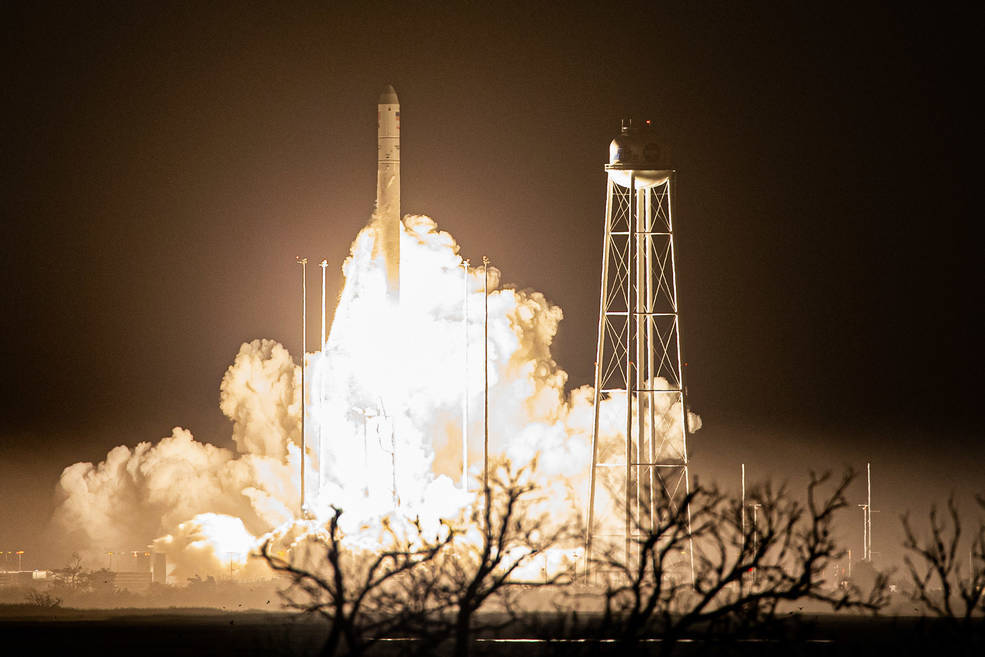
Media accreditation is open for launch of the next commercial resupply services mission to deliver NASA science investigations, supplies, and equipment to the International Space Station.
NASA and Northrop Grumman are targeting liftoff of the company’s Antares rocket and Cygnus spacecraft, named the S.S. Laurel Clark, no earlier than 8:30 p.m. EDT on Tuesday, Aug. 1, from the Mid-Atlantic Regional Spaceport’s Pad 0A at the agency’s Wallops Flight Facility in Virginia.
Both U.S. and international media may apply for credentials to cover the prelaunch and launch activities at Wallops. The application deadline for U.S. citizens is 3 p.m., Wednesday, July 26. International media without U.S. citizenship must apply by 3 p.m., Tuesday, July 18. Media must RSVP to Amy Barra at: amy.l.barra@nasa.gov. NASA’s media accreditation media accreditation policy is available online.
The in-person, multi-day media event includes an opportunity to tour the launch pad, capture video and photos using remote camera setups, and experience the launch from a media viewing area.
Following launch, Cygnus will be grappled by the space station’s Canadarm2 no earlier than Friday, Aug. 4, and berthed to the Unity module’s Earth-facing port for cargo unloading by the Expedition 69 crew.
Each resupply mission to the station delivers scientific investigations in the areas of biology and biotechnology, Earth and space science, physical sciences, and technology development and demonstrations.
Highlights of space station research aboard this Cygnus are:
- The final iteration of a series of flammability experiments
- A new potable water dispenser that provides hot water and improved sanitization
- Neural cells that will be cultured into 3D cell models for gene therapy testing
- A probe that measures plasma contents of the upper atmosphere
- A memory card that contains creative works from students around the world
Cargo resupply from U.S. companies ensures a national capability to deliver critical scientific research to the space station, significantly increasing NASA's ability to conduct new investigations aboard humanity’s laboratory in space.
Quelle: NASA
----
Update: 13.07.2023
.
NASA to Discuss Science on Next Northrop Grumman Space Station Mission
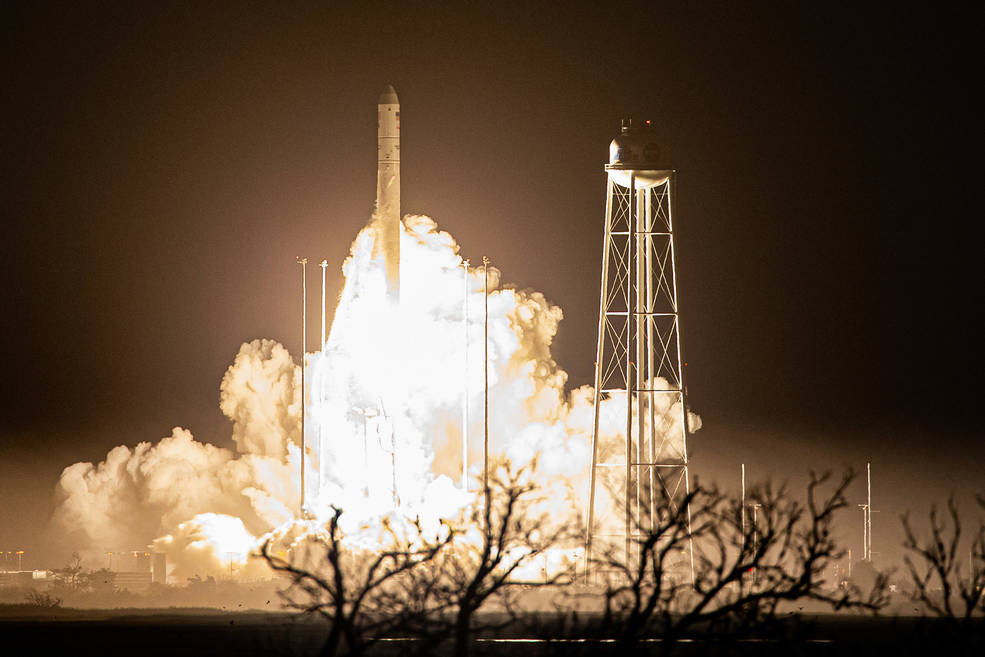
NASA will host a media teleconference at 10 a.m. EDT on Tuesday, July 18, to discuss the next science investigations bound for the International Space Station aboard Northrop Grumman’s Cygnus spacecraft on the company’s 19th commercial resupply mission for NASA.
Audio of the media call will stream live at:
NASA and Northrop Grumman are targeting launch no earlier than 8:30 p.m. on Tuesday, Aug. 1. The Cygnus spacecraft, carried atop the company’s Antares rocket, will launch from the Mid-Atlantic Regional Spaceport at NASA’s Wallops Flight Facility in Virginia. The mission will carry scientific research, crew supplies, and hardware to the space station to support its Expedition 69 crew.
Cygnus is scheduled to rendezvous with the station on Friday, Aug. 4, for robotic installation to the Unity module’s Earth-facing port.
To participate in the call, media must RSVP at least two hours prior to the start of the event to Joshua Finch at joshua.a.finch@nasa.gov. The public can submit questions on social media using #AskNASA. A copy of the agency’s media policy is online.
Heidi Parris, associate program scientist for the International Space Station Program at NASA’s Johnson Space Center in Houston, will provide an overview of the research launching aboard the Cygnus spacecraft.
In addition to Parris, teleconference participants include:
- Dr. David Urban, branch chief, and principal investigator for Saffire-VI, NASA’s Glenn Research Center in Cleveland
- Katherine Toon, integration manager for exploration environmental control and life support, International Space Station Program at NASA Johnson, who will speak on Exploration Potable Water Dispenser
- Dr. Shane Hegarty, chief scientific officer and co-founder of Axonis Therapeutics, Inc., and principal investigator for Neuronix
- Dr. Lasse Clausen, professor of Plasma and Space Physics, University of Oslo, Norway, who will speak on Multi-Needle Langmuir Probe
- Tsutomu Yamanaka, principal investigator IHI Corporation, and principal investigator for I-Space Essay
Cargo resupply from U.S. companies ensures a national capability to deliver critical hardware and science research to the space station, significantly increasing the ability of NASA to conduct new investigations at the orbital outpost. Other U.S. government agencies, private industry, and academic and research institutions can also conduct microgravity research through our partnership with the International Space Station National Laboratory.
The orbiting microgravity laboratory advances scientific knowledge in Earth, space, physical, and biological sciences. Such research benefits people on Earth and lays the groundwork for future human exploration deeper into the solar system, including to the Moon through the agency’s Artemis missions.
Quelle: NASA
----
Update: 27.07.2023
.
NASA Sets Coverage for Cargo Launch to International Space Station
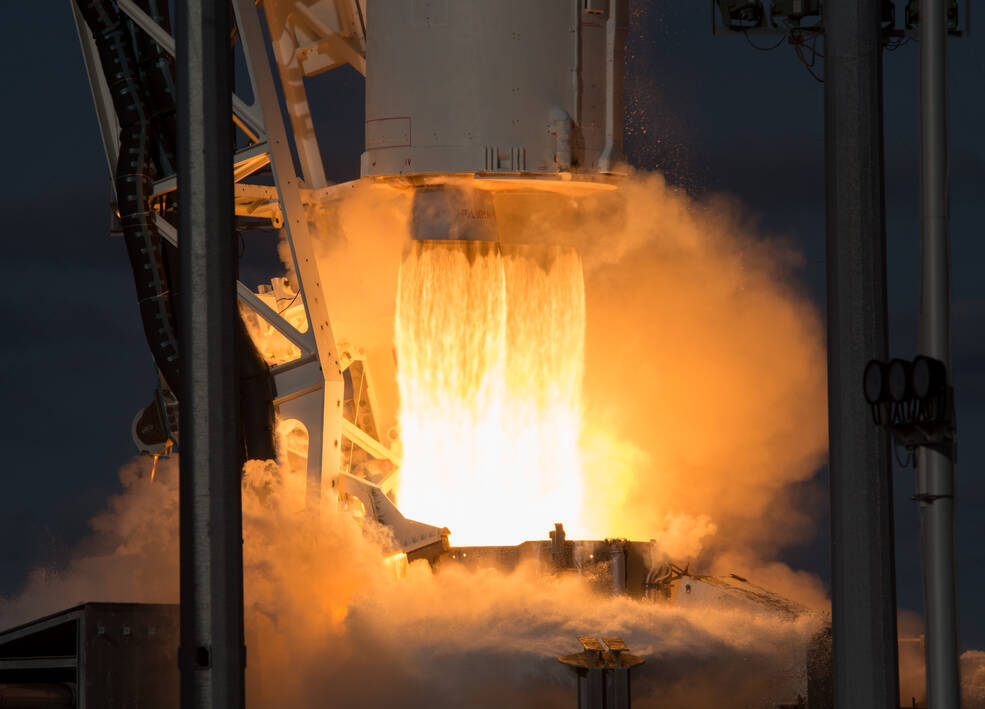
NASA and commercial cargo provider Northrop Grumman are targeting 8:31 p.m. EDT, Tuesday, Aug. 1, for the launch of the company’s 19th resupply mission to the International Space Station from the agency’s Wallops Flight Facility in Virginia.
Live launch coverage will begin at 8 p.m. and will air on NASA Television, the NASA app, and the agency’s website, with prelaunch events starting Sunday, July 30. Follow all events at:
Filled with more than 8,200 pounds of supplies, Northrop Grumman’s Cygnus cargo spacecraft will launch on the company’s Antares rocket from Virginia Spaceport Authority’s Mid-Atlantic Regional Spaceport. It will arrive at the space station Friday, Aug. 4.
NASA coverage of rendezvous and capture will begin at 4:30 a.m. followed by installation coverage at 7:30 a.m. NASA astronaut Woody Hoburg will capture Cygnus using the station’s robotic arm, and NASA astronaut Frank Rubio will act as backup. After capture, the spacecraft will be installed on the Unity module’s Earth-facing port.
Highlights of space station research facilitated by delivery aboard this Cygnus are:
- The final iteration of a series of spacecraft fire protection experiments
- A new potable water dispenser that provides hot water and improved sanitization
- Neural cells that will be cultured into 3D cell models for gene therapy testing
- A probe that measures plasma density of the upper atmosphere
- A memory card that contains creative works from students around the world
The Cygnus spacecraft is scheduled to remain at the space station until October, when it will depart the orbiting laboratory.
Northrop Grumman named the Cygnus spacecraft the S.S. Laurel Clark after late NASA astronaut Laurel Clark. Clark was a crew member of NASA’s STS-107 mission aboard space shuttle Columbia, successfully conducting 80 experiments while logging 15 days in space. She and her fellow STS-107 crew members tragically lost their lives when Columbia did not survive its re-entry into Earth’s atmosphere.
NASA coverage of the mission is as follows (all times Eastern and subject to change based on real-time operations):
Sunday, July 30:
5 p.m. – Prelaunch media teleconference (no earlier than one hour after completion of the Launch Readiness Review) with the following participants:
- Joel Montalbano, program manager for the International Space Station, NASA’s Johnson Space Center in Houston
- Heidi Parris, associate program scientist for the International Space Station, NASA Johnson
- Steve Krein, vice president, Civil and Commercial Space, Northrop Grumman
- Kurt Eberly, director, Space Launch Programs, Northrop Grumman
- Jeff Reddish, range chief, NASA Wallops
Media who wish to participate by phone must request dial-in information by 12 p.m. on Friday, July 28, from Amy Barra at amy.l.barra@nasa.gov. Media and the public also may submit questions on social media using #AskNASA.
Tuesday, Aug. 1:
- 8 p.m. – Launch coverage begins
- 8:31 p.m. – Launch
Friday, Aug. 4:
- 4:30 a.m. – Rendezvous coverage begins
- 5:55 a.m. – Capture of Cygnus with the space station’s robotic arm
- 7:30 a.m. – Cygnus installation operations coverage
Public Participation
Members of the public can register to attend the launch virtually. Virtual guests will have access to curated resources, schedule changes, and mission-specific information straight to your inbox. Following each activity, virtual guests are sent a mission-specific collectable stamp for their virtual guest passport. Hear more about the virtual guest program from NASA's SpaceX Crew-5 astronauts.
The evening launch may be visible, weather permitting, to residents throughout the mid-Atlantic region and possibly the East Coast of the United States. The launch viewing area will be open 5:30 p.m. until 9 p.m. on Tuesday, Aug. 1, at NASA’s Wallops Flight Facility Visitor Center.
Quelle: NASA
----
Update: 2.08.2023
.
Northrop Grumman prepares for final flight of Antares with Russian and Ukrainian components
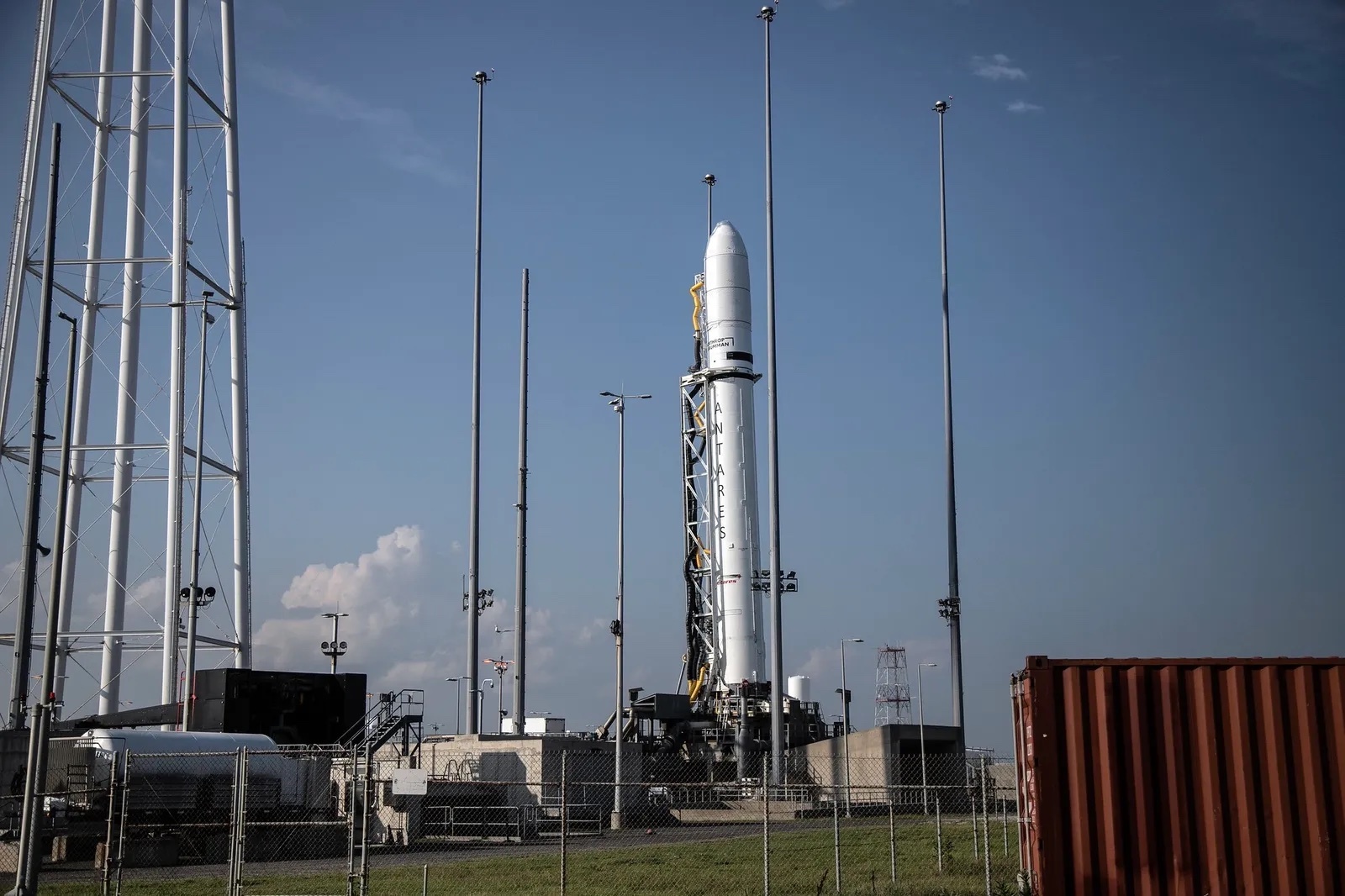
An Antares 230+ rocket on the pad at Wallops Island, Virginia, to launch a Cygnus cargo spacecraft Aug. 1. Credit: Northrop Grumman/Thom Baur
WASHINGTON — A Cygnus cargo spacecraft is set to launch to the International Space Station on the final flight of a version of an Antares rocket with Russian and Ukrainian components.
NASA and Northrop Grumman completed a launch readiness review July 30 for the NG-19 mission, approving plans to launch the spacecraft on Aug. 1 at 8:31 p.m. Eastern from the Mid-Atlantic Regional Spaceport on Wallops Island, Virginia. Forecasts project an 80% chance of acceptable weather for the scheduled liftoff.
The Cygnus is carrying nearly 3,750 kilograms of cargo to the station, including experiments, hardware and crew supplies. An on-time launch would allow the spacecraft to arrive at the station early Aug. 4 and remain there at least three months.
This is the first Cygnus mission since the launch of NG-18 in November 2022. On that mission, one of two solar arrays on the Cygnus failed to deploy, but the spacecraft was able to carry out its mission with the single array.
The solar array did not deploy because debris that lodged in the hinge of the array, preventing it from unfolding, said Steve Krein, vice president of civil and commercial space at Northrop Grumman, during a July 30 briefing. “There’s really no redesign of modifications required” to the spacecraft, he said.
That debris came from acoustic blankets in the interstage portion of the Antares during stage separation. “It wasn’t a clean separation and we created some debris, and unfortunately a piece of the acoustic blanket became lodged in one of the Cygnus solar arrays,” said Kurt Eberly, director of space launch programs at Northrop Grumman. He said the company implemented unspecified corrective actions that have been reviewed by NASA ahead of the NG-19 launch.
The NG-19 launch will be the last of the current version of the rocket, called Antares 230+. That version of the rocket uses a first stage manufactured by Ukraine’s Yuzhnoye State Design Office and Yuzhmash Machine Building plant, with RD-181 engines from Russian company NPO Energomash.
When Russia invaded Ukraine in February 2022, triggering sanctions that largely cut off Russia’s space industry from the West, Northrop Grumman said it had components for two more Antares launches, the NG-18 and -19 missions. In August 2022, Northrop announced it was partnering with Firefly Aerospace to develop a new version of the rocket, Antares 330, using a domestically manufactured first stage and engines.
Eberly said the companies have completed critical design reviews (CDRs) for the structure of the first stage as well as Firefly’s Miranda engines that will power it. A system-level CDR is scheduled for September, and Firefly plans to start hot-fire tests of Miranda this fall.
When Northrop and Firefly announced their partnership last August, they expected to start launching the Antares 330 by late 2024. That has now slipped to the summer of 2025, he said.
While Antares 330 is in development, Northrop will launch three Cygnus missions on SpaceX Falcon 9 rockets. Despite the delay in the introduction of the new Antares, Eberly said Northrop doesn’t anticipate buying additional Falcon 9 launches. “We’re planning NG-20, -21 and -22 missions on Falcon 9, and then the plan is to return to Wallops” for NG-23 and beyond on Antares 330.
The new first stage is more powerful than the existing one, increasing payload performance for the rocket from 8,120 kilograms for Cygnus ISS missions to 10,500 kilograms. “We think that opens the doors for other markets for us,” Eberly said.
The Antares 330 also serves as a transition for a future rocket, currently known simply as the Medium Launch Vehicle, where the solid-fuel upper stage will be replaced by one using a version of the Miranda engine. That will further increase the vehicle’s payload capacity to 16,000 kilograms.
“With that increased capability, coupled with the domestic supply chain, we think we’re going to be able to address other markets, including NASA civil and DOD markets, as well as commercial, in addition to cargo resupply,” he said.
Quelle: SN
+++
Update: 13:00 MESZ
.
Science, Hardware Launch on NASA’s Northrop Grumman Cargo Mission
A Northrop Grumman Cygnus resupply spacecraft is on its way to the International Space Station with more than 8,200 pounds of NASA science investigations and cargo after launching at 8:31 p.m. EDT Tuesday from the agency’s Wallops Flight Facility in Virginia.
NASA Television, the NASA app, and the agency’s website will provide live coverage of the spacecraft’s rendezvous with the space station beginning at 4:30 a.m. Friday, Aug. 4.
Cygnus is scheduled for capture by the Canadarm2 robotic arm at 5:55 a.m., which will be operated by NASA astronaut Woody Hoburg with assistance from NASA astronaut Frank Rubio.
Northrop Grumman’s 19th cargo flight to the space station is the eighth under its Commercial Resupply Services 2 contract with NASA. The Cygnus spacecraft launched on the company’s Antares 230+ rocket from the Mid-Atlantic Regional Spaceport’s Pad-0A on Wallops Island.
The resupply mission will support dozens of research experiments conducted during Expedition 69. Included among the investigations are:
- Testing gene therapy: Neuronix, sponsored by the International Space Station National Laboratory, demonstrates the formation of 3D neuron cell cultures in microgravity and tests a neuron-specific gene therapy.
- Experimenting with fire: The sixth Spacecraft Fire Experiments (Saffire-VI) is the last in a series to test flammability at different oxygen levels and to demonstrate fire detection and monitoring as well as post-fire cleanup capabilities. This experiment will take place after the spacecraft has departed the space station.
- Measuring atmospheric density: The Multi Needle Langmuir Probe, an investigation from ESA (European Space Agency), monitors plasma densities in the ionosphere – where Earth’s atmosphere meets space.
- Better water for explorers: A water system launched in fall 2008 provides water for crew consumption and food preparation on the space station. A new system, Exploration PWD, uses advanced water sanitization and microbial growth reduction methods and dispenses hot water.
- High-flying art: For I-Space Essay, JAXA (Japan Aerospace Exploration Agency) is sending a memory card that contains digital works created by students, such as pictures and poetry, to the space station.
- Robotic helper: A cube-shaped Astrobee robot is on its way back to the space station to help reduce the amount of time astronauts spend on routine tasks.
Hardware upgrades to improve outcomes for researchers
Cygnus also will deliver a condensation module and heat transfer system for the Flow Boiling and Condensation Experiment that will help researchers better understand heat distribution and flow. Such knowledge could be used to enhance mechanisms that protect astronauts from the extreme hot and cold temperatures of space.
The station’s Cold Atom Lab, which makes use of the microgravity environment of space to study quantum phenomena in ways that aren’t possible on Earth, will get an upgrade that will give scientists more data in a wider variety of experimental conditions.
These are just a sample of the hundreds of investigations conducted aboard the orbiting laboratory in the areas of biology and biotechnology, physical sciences, and Earth and space science. Such research benefits humanity and lays the groundwork for future human exploration through the agency’s Artemis missions, which will send astronauts to the Moon to prepare for future expeditions to Mars.
Northrop Grumman named the Cygnus ‘S.S. Laurel Clark’ after late NASA astronaut and crew member of NASA’s STS-107 mission aboard space shuttle Columbia, Laurel Clark.
The Cygnus spacecraft will remain at the space station until October before it departs and disposes of several thousand pounds of trash through its destructive re-entry into Earth’s atmosphere.
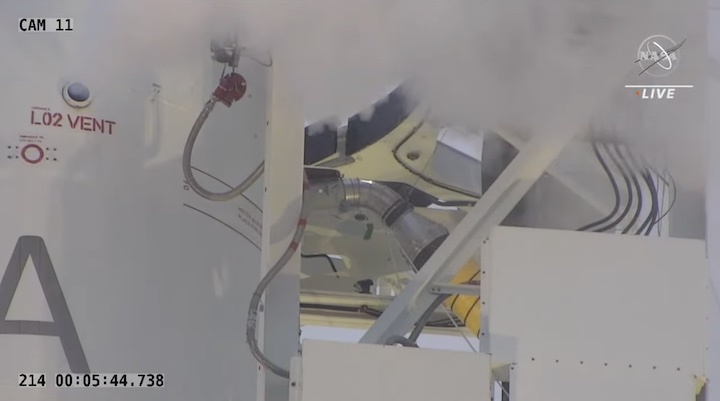
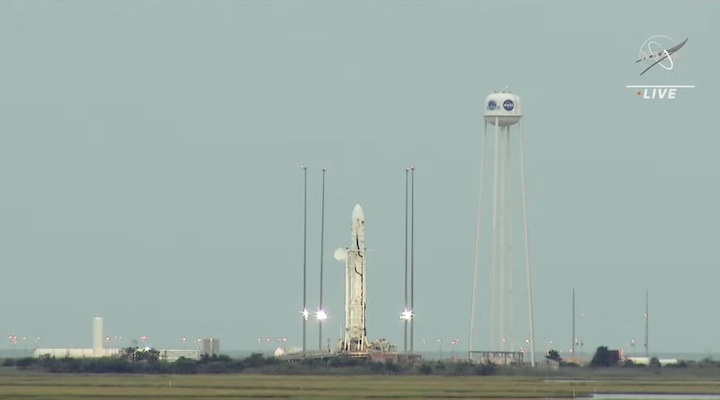
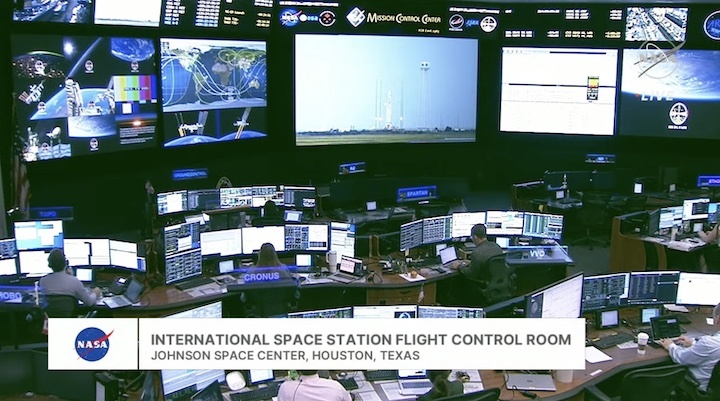
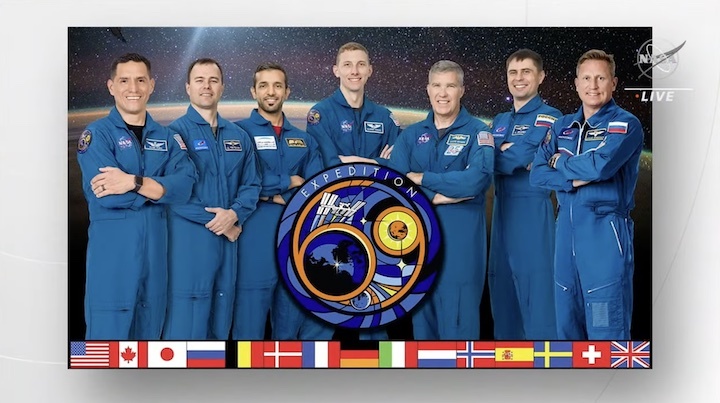
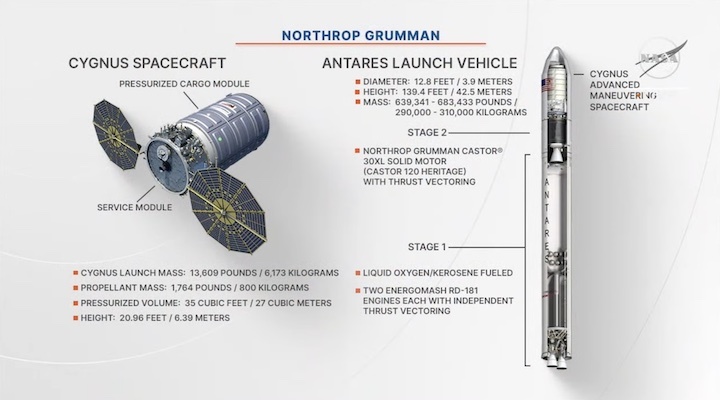
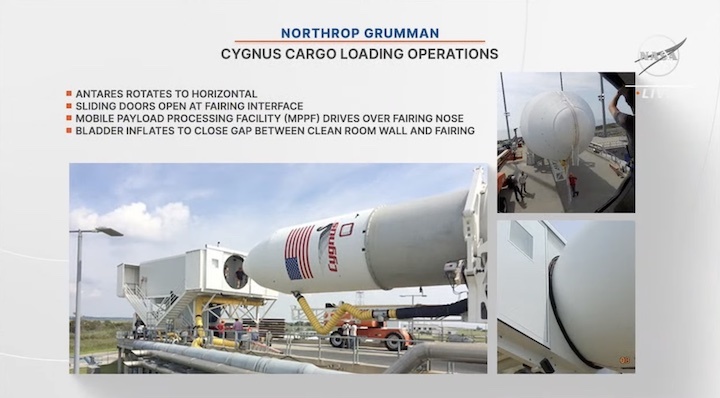
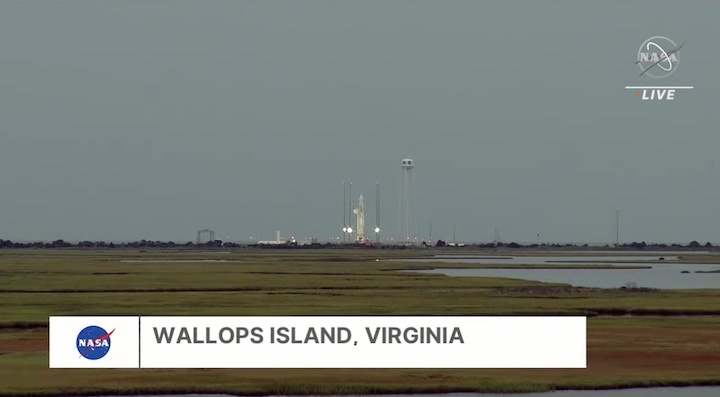
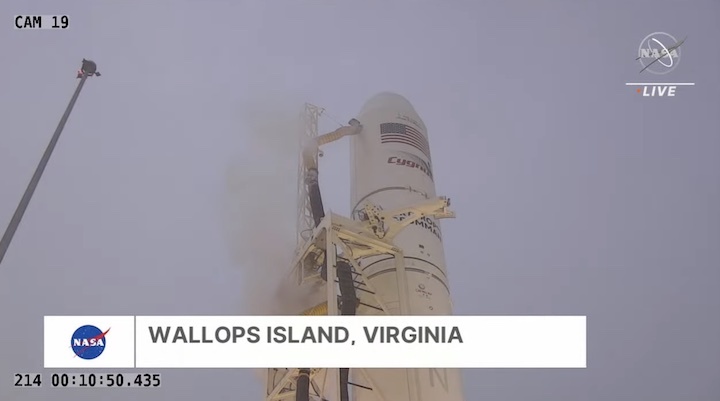
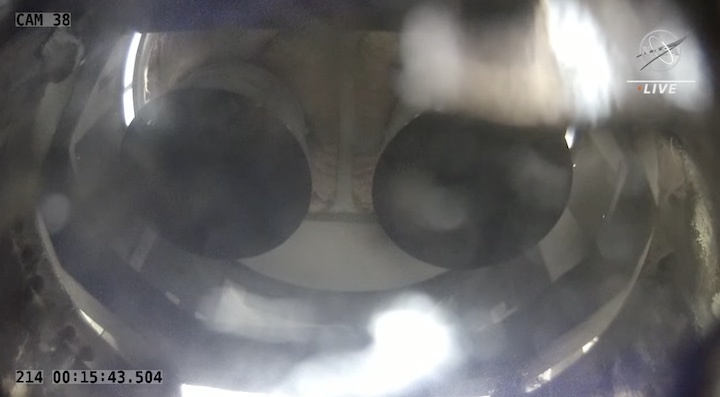
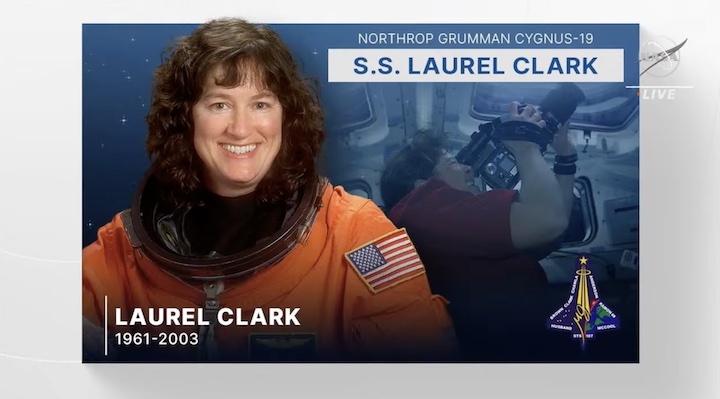
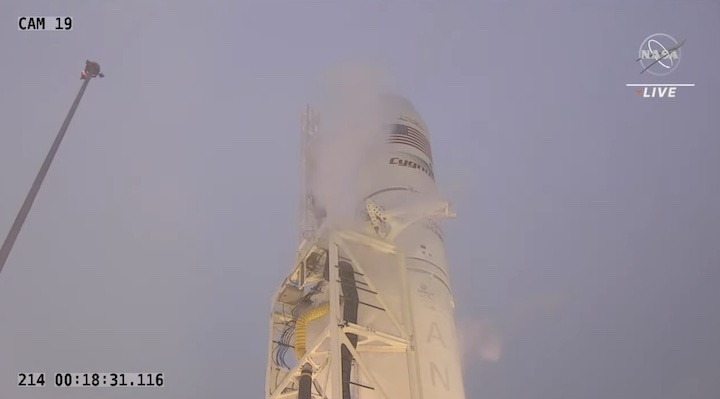
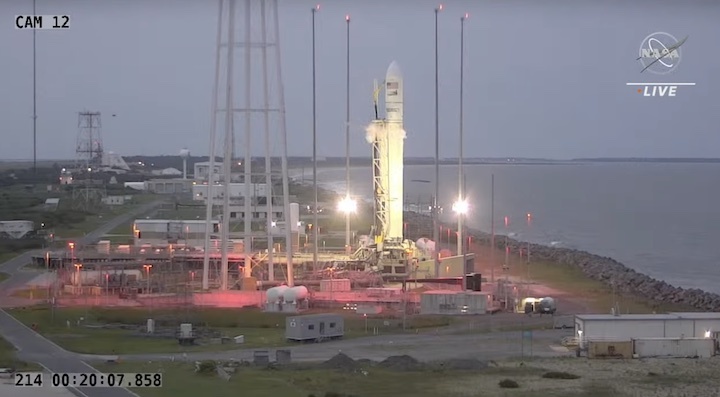
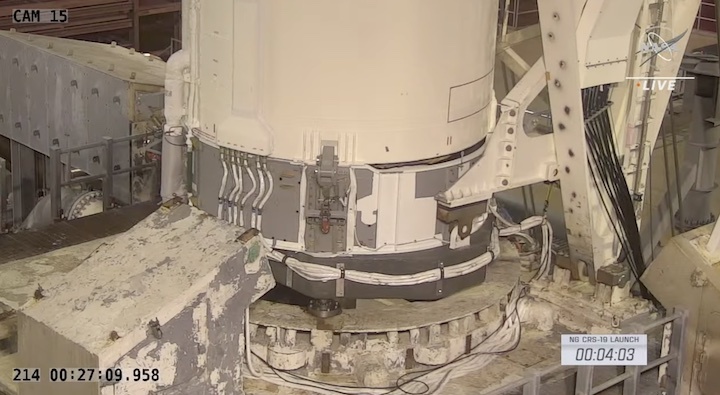
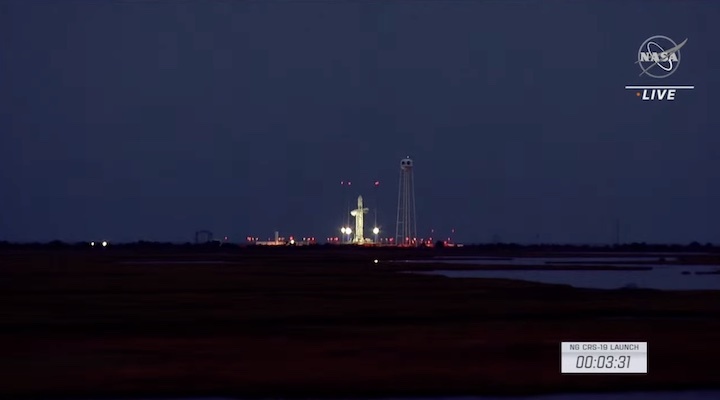
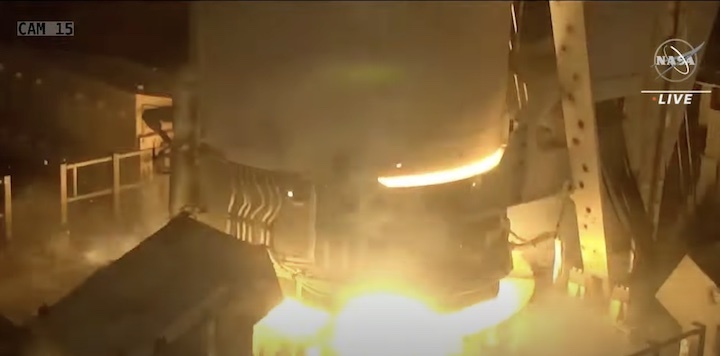
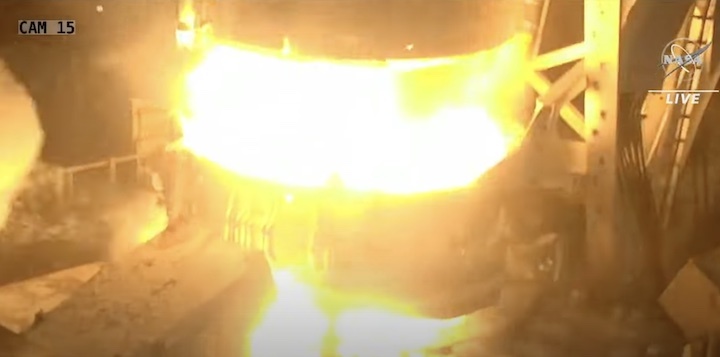
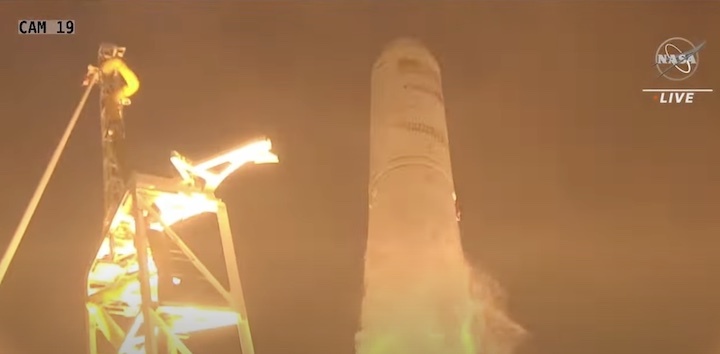
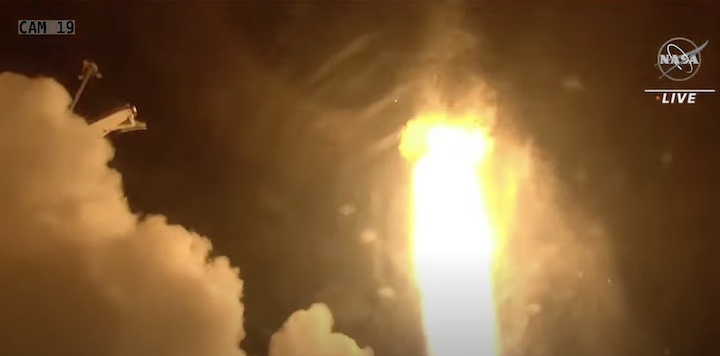
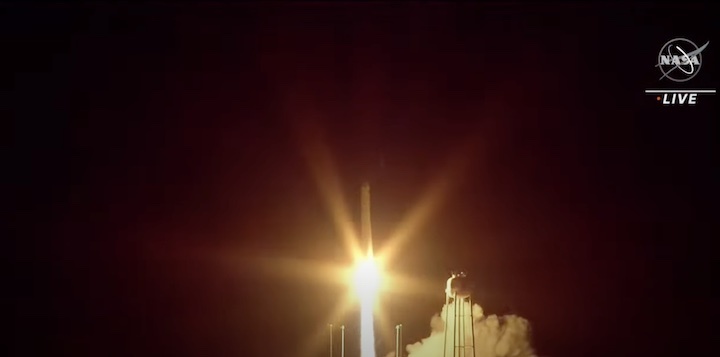
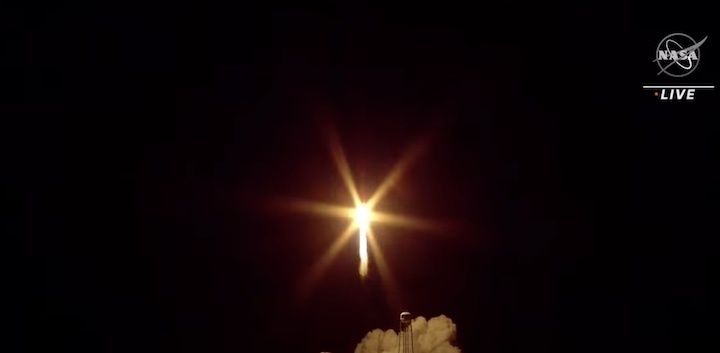
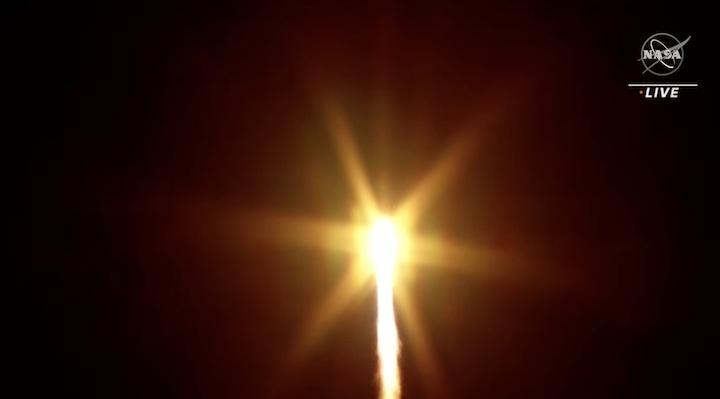
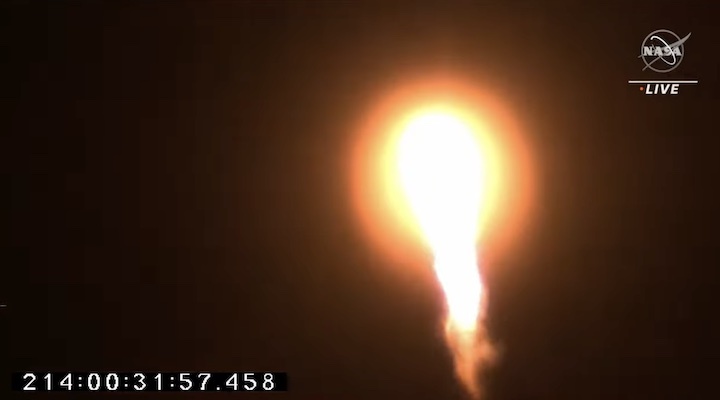
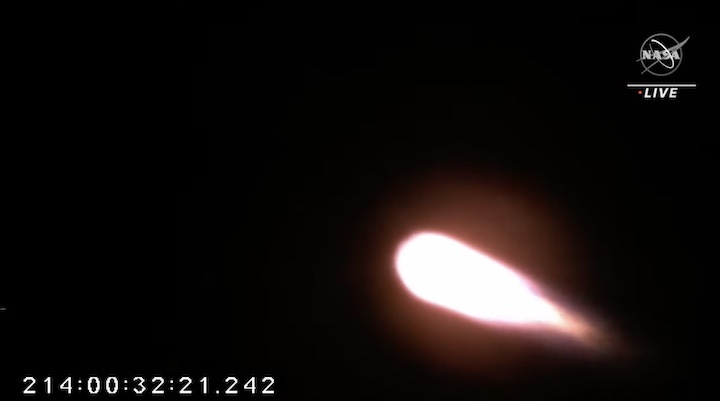
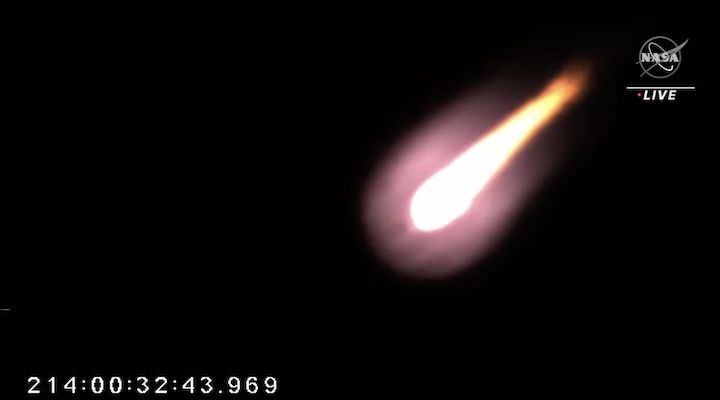
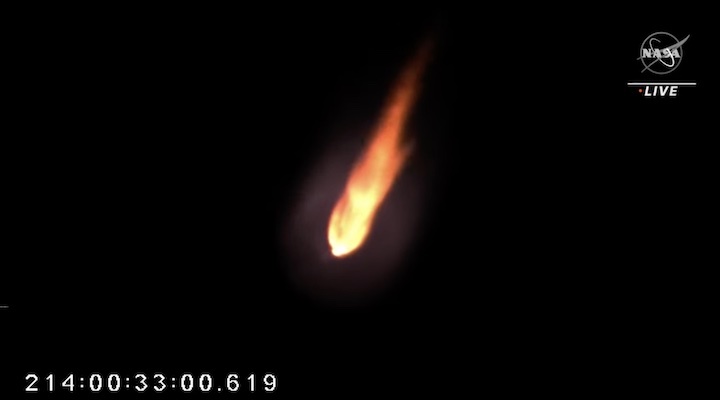
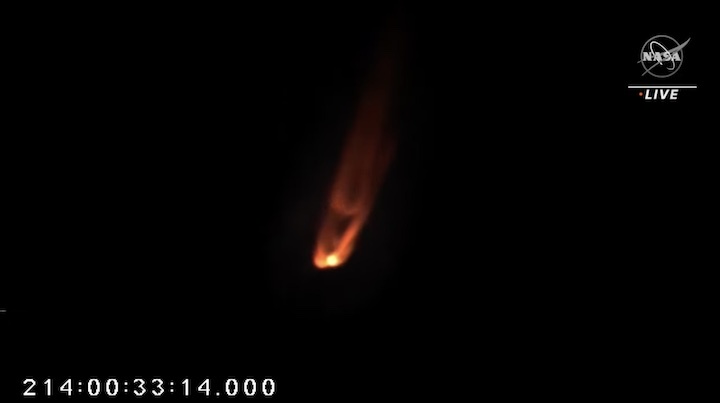
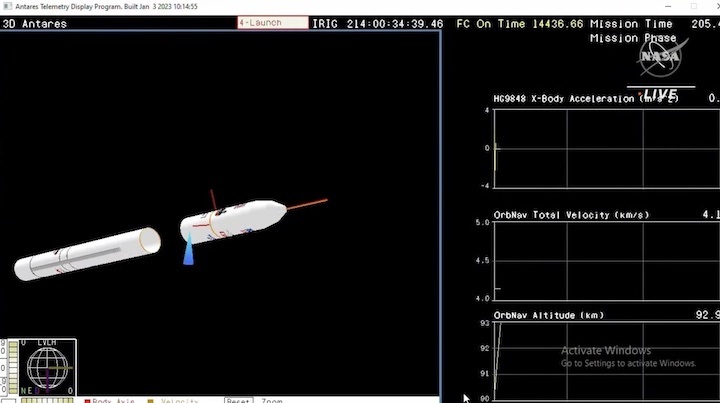
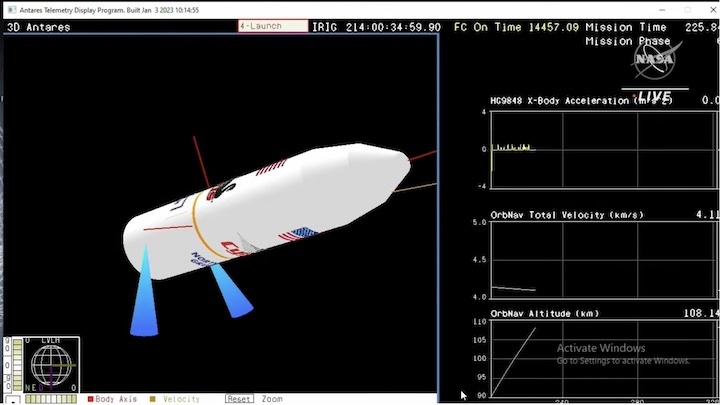
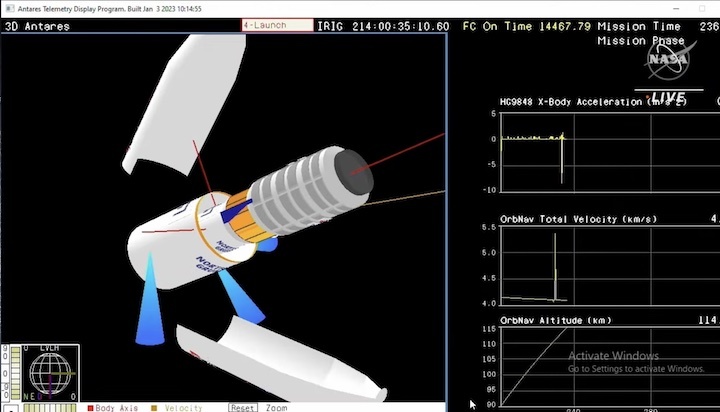
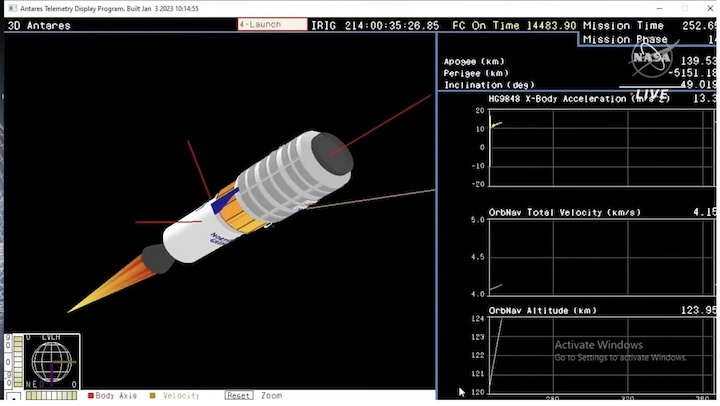
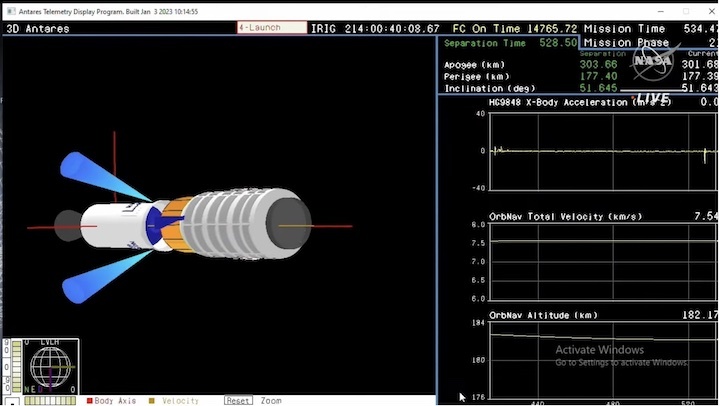
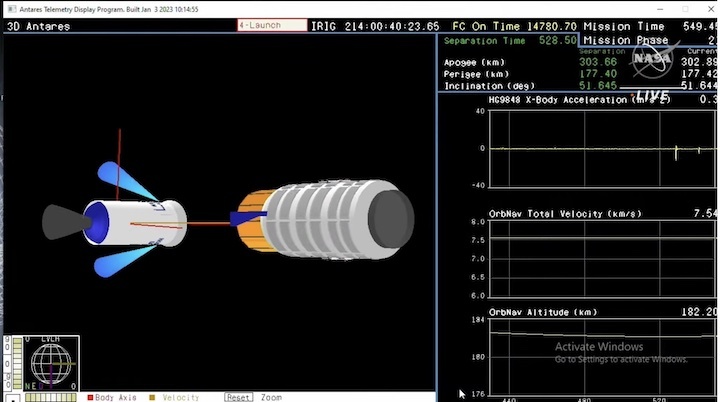
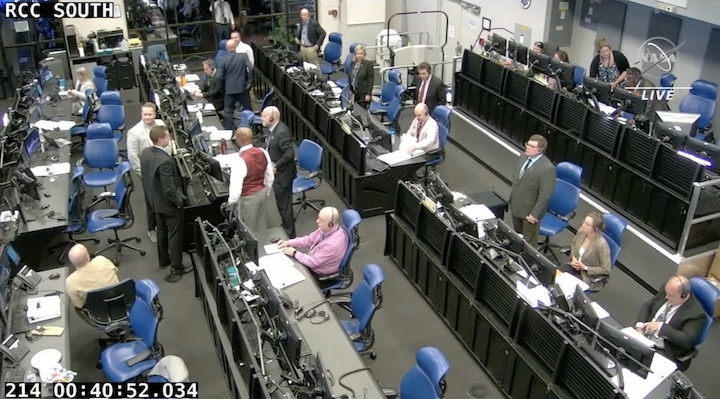
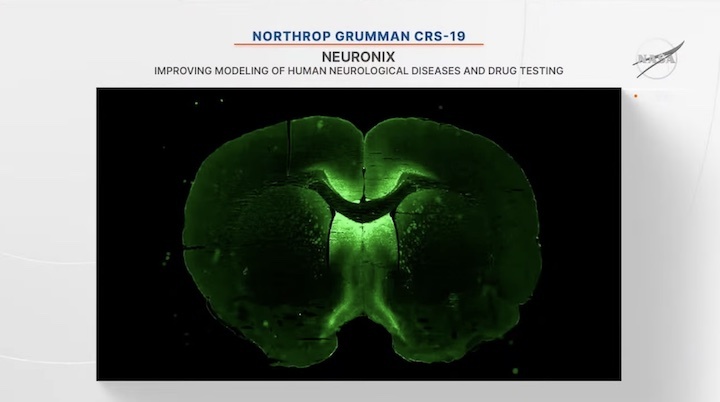
Quelle: NASA
